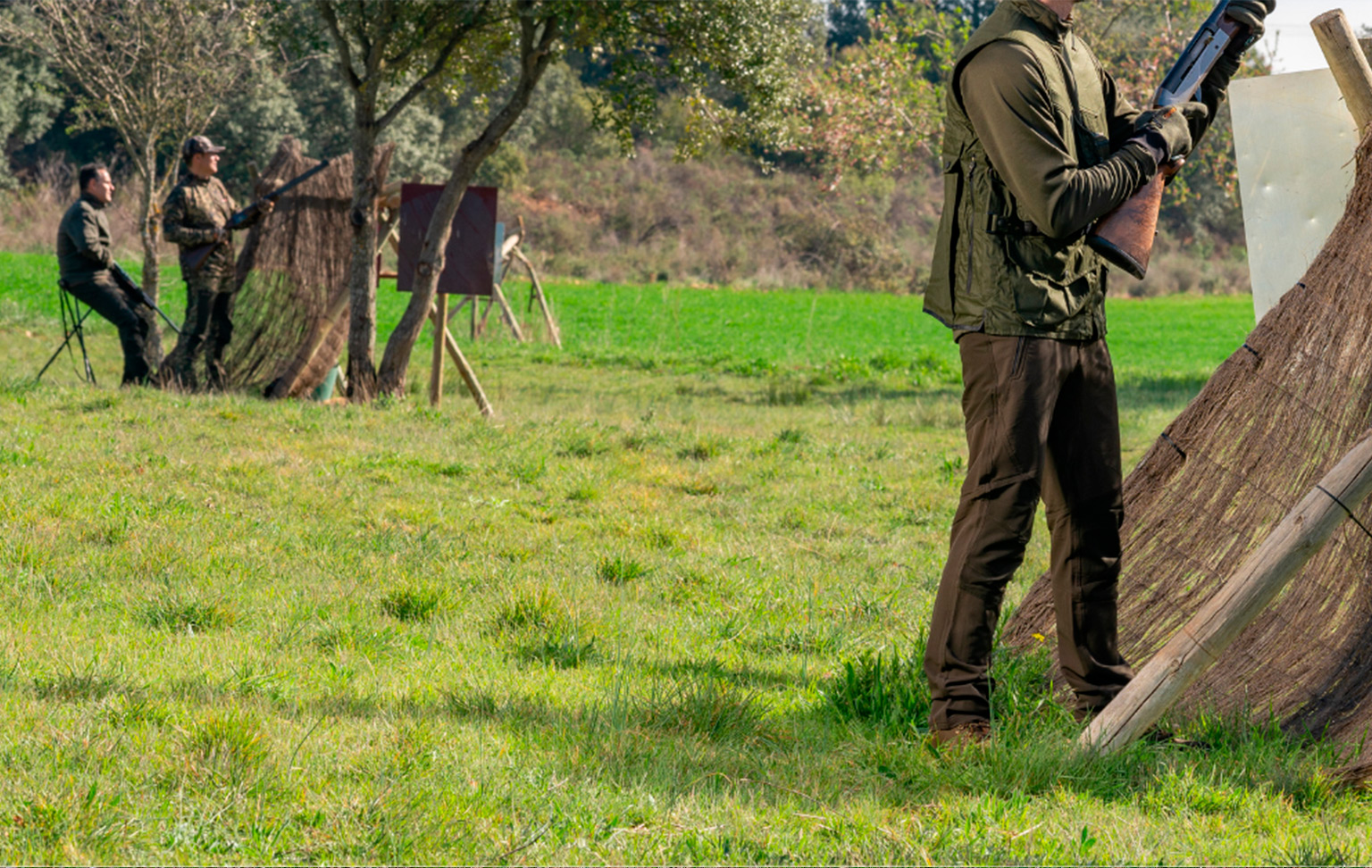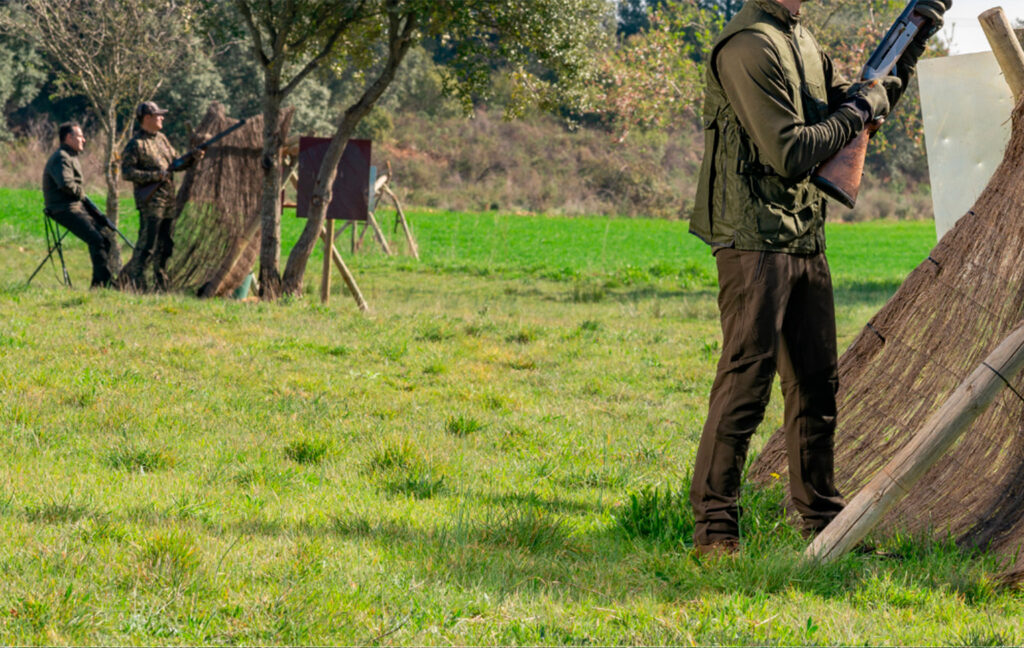
How to avoid accidents in sport hunting
Sport hunting is an activity that requires concentration, skill and, above all, safety.
Despite the experience of hunters, accidents can happen if the right measures are not taken. In this article we give you some key recommendations to make your hunting trip safe and risk-free.

1. Preparation before the hunt
One of the most important factors in avoiding accidents is to ensure that all equipment is in perfect condition before going out into the field.
Before any hunting trip, one of the most important aspects to avoid accidents is a thorough check of the equipment. It’s not just about checking that everything is in place, but ensuring that every piece is working properly.
- Weapons: The first priority is to check the condition of the weapon you are going to use. Check that there are no obstructions in the barrel, that the trigger is in good condition and that the safety mechanisms are in good working order. Clean your firearm properly before use to prevent dirt or debris from interfering with its operation. If in doubt, a check by your regular gunsmith will give you full confidence.
- Ammunition: Make sure your ammunition is suitable for your firearm and is in good condition. Old or poorly stored ammunition may not work properly, which can lead to malfunctions or even dangerous situations.
- Binoculars and other accessories: Don’t forget to check the condition of your binoculars, knives or any other equipment you plan to carry. Check that your knives are sharp and in their sheaths, and that your binoculars are in good working order so that you can safely observe your surroundings.
Choose appropriate footwear: Footwear is one of the most important elements to ensure your safety during a day’s hunting. Hunting terrain is often uneven, slippery or steep, so choosing the right boots is key to preventing accidents.
- Support and stability: Hunting boots are designed to provide optimum ankle support, which reduces the risk of twisting or falling. Mountainous or rocky terrain demands footwear that allows you to move safely and confidently, without fear of losing your balance.
- Waterproof and breathable: Another essential factor is that footwear should be waterproof but also breathable. Boots with membranes such as Gore-Tex allow your feet to stay dry even in wet conditions, but also allow sweat to escape, preventing moisture from building up inside and preventing blisters.
- Traction: A good hunting shoe should have a sole with optimum grip, especially on wet or muddy ground. Polyurethane soles offer cushioning and are less slippery than rubber soles which offer greater resistance.
Safety clothing: High-visibility clothing is a must, especially if you are hunting in a group or in areas where there are other hunters. This ensures that you are always seen and reduces the risk of being mistaken for an animal.
2. Training and knowledge
Experience in handling equipment and knowledge of local rules are essential to minimise accidents.
Know the rules: Make sure you are up to date with the hunting regulations in your region. These rules not only protect the wildlife, but also the hunters. Penalties can be severe if they are not followed.
Safe gun handling: If you are new to hunting or have little practice, regular training is essential. Mishandling weapons can have serious consequences.
First aid: Accident prevention is essential, but being prepared to act in case of an emergency can save lives. Carrying a proper first aid kit and knowing how to use it is one of the best ways to be ready for the unexpected.
- Basic first aid kit contents: A first aid kit for a day’s hunting should include essentials such as bandages, sterile gauze, plasters, disinfectant, sticking plaster and scissors. In addition, it is advisable, where possible, to carry a thermal blanket for emergency situations or extreme cold, as well as an antiseptic solution for cleaning wounds.
- Clear instructions: It is important not only to have the right equipment, but also to know how to use it. If you have no first aid knowledge, consider taking a basic course that teaches you how to react to cuts, sprains, fractures or, in the worst case, more serious injuries. Having clear priorities (such as stopping bleeding or immobilising an injured person) can make all the difference until professional help arrives.
- Personalised first-aid kit: Every hunter should adapt his first-aid kit according to the hunting conditions. If the terrain is prone to insects or poisonous animals, include antidote or sting medicine. If the weather is very cold, you can add skin cream or hand warmers.
3. Teamwork
If you hunt in a group, good communication is key to avoiding accidents.
Constant communication: Keep eye contact or use radios or GPS applications to be in constant communication with other team members. Knowing where everyone is is essential to avoid confusion.
Position marking: Make sure all hunters in your group are clear about their place in the field and are identified with visible clothing to avoid accidental shootings.
4. Knowledge of the terrain
Scouting and studying the terrain before you start hunting is another measure that can reduce the risk of accidents.
Preliminary reconnaissance: Examine the hunting area before the start of the day’s hunting. Identify ravines, water hazards or slippery areas to avoid or use extra caution.
Be aware of the weather: Weather conditions can change quickly and make terrain more dangerous. If conditions deteriorate, it is best to postpone the activity.
5. Wildlife rules
It is essential to be cautious when shooting and to be completely sure of your target before pulling the trigger.
Clear identification: Make sure that what you are aiming at is your target. Never shoot blindly or without being 100% sure that it is prey.
Safe distance: Maintaining a safe distance is not only important between members of the hunting team, but also from wildlife. It is vital that each hunter is aware of the risks involved in shooting without considering the proper distance.
- Distance between hunters: When hunting in a group, the minimum distance between each member should be sufficient so that there is no risk of cross-fire. It is advisable to maintain a distance that allows a clear view of all team members, preferably always within the field of vision of the others. Avoiding blind spots is essential.
- Shooting zone: Never shoot if there is any chance that another hunter or person is close to the line of fire, even if you think they are far away. Shots can ricochet off hard surfaces or be deflected by obstacles, increasing the risk of accidents.
- Distance to target: Make sure the target is at an adequate distance for an accurate shot. Shooting from too far away reduces accuracy, which can lead to wounding the animal instead of taking it down with one clean shot, or hitting an unintended target. Knowing when not to shoot is as important as shooting correctly.
Sport hunting can be a very rewarding activity, but safety must always be the priority. Preparing properly, knowing the terrain, maintaining good communication and using the right equipment can make the difference between a rewarding day and an accident. Enjoy the hunt, but don’t forget that prevention is your best ally.
- Big Game (4)
- Chiruca (4)
- Fairs (2)
- Hunting dogs (6)
- News (11)
- Relevant information (36)
- Small Game (1)